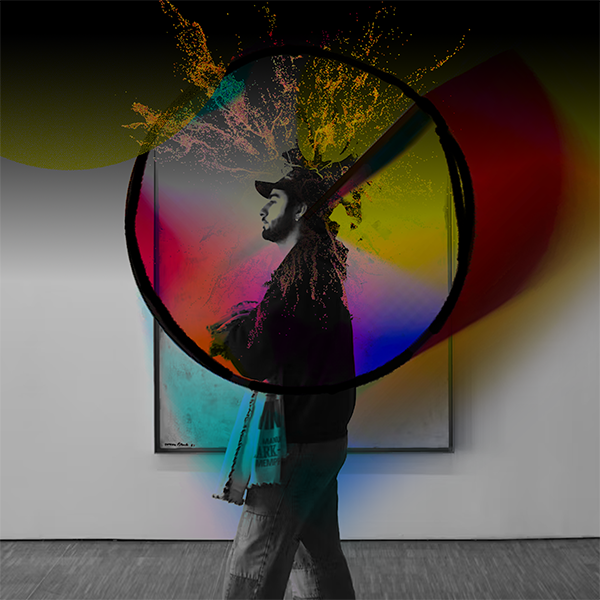Centering Voices of Color is More Complicated Than We Realized
The phrase “we need to center voices of color” has become mainstream. It’s discussed in church staff meetings and on conference panels. It’s part of diversity, equity, and inclusion training. If a church is serious about diversity, centering voices of color is part of their rallying cry.
But what exactly does it mean to center voices of color? The solution is not as easy as hiring one (or a few) persons of color. Majority culture churches express a commitment to centering voices of color, but then the new ethnic hire often bears the full burden of designing and implementing the details of this new commitment. Ethnic minorities are expected to fully express who they are, what their unique voice is, and what they are bringing to the table. Not only do they find themselves in a constant cycle of explaining and clarifying how and why they think differently, but they must be ready to justify being heard and develop lengthy strategic plans for integrating their ideas. This is what makes the task of centering voices of color so hard. Verbalization, justification, and implementation are all very Western forms used to understand centering. If we want to center voices of color in our churches, we need to have a more robust understanding of who we are as cultural beings and how we express ourselves.
If we want to center voices of color in our churches, we need to have a more robust understanding of who we are as cultural beings and how we express ourselves. Share on XThree Stages of Western Centering
When churches say they want more voices of color, what they’re often implicitly saying is that they want more cultural representation. Culture, in its simplest form, is defined as the stories born from our ethnic roots. We each have a story, thus each of us has a culture. As I argue in Becoming All Things, humans are a composite of “the complex stories we pick and choose from our communities, including our families and our friends, that help us determine what it means to live a good life and to be a good person.” There is a problem, however, in assuming that our cultural consciousness (our understanding of our story) and our cultural expression (the way we communicate our story to the people around us) is a purely intellectual practice. Seeing people as a mere composite of our brains and words is a very Western understanding of culture. In fact, it’s reflective of the seventeenth-century French philosopher René Descartes’s theory of dualism in which the mind and body are two separate entities, and greater value is placed on the mind. Descartes popularized the idea that “I think, therefore I am,” meaning that the core of who we are and how we express ourselves is localized within a discipline of words. There are categorical flaws to the application of Descartes’s dualistic thought within conversations on culture and voices. In fact, the pressure that people of color feel to constantly verbalize who they are through oral and written forms is the first stressor experienced when hired to represent more diverse voices.
Seeing people as a mere composite of our brains and words is a very Western understanding of culture. Share on XEthnic minorities, especially bicultural and multicultural individuals, must continually explain who they are. Many of us have been asked the question “So, what are you?” our whole life, and we’ve never had a good answer because it’s complicated and not easy to articulate. If we’ve come to the place in our life that we can proudly and publicly advocate for voices of color to be centered, we’ve made progress on our journey of going from hiding who we are culturally to wanting to be proud of our ethnic roots. That alone is something to celebrate! People of color are slowly feeling more confident to raise their voices and express a desire for people who look and talk like them to be centered in leadership. They’re trying to authentically live out their life at the intersection of multiple cultures and racialized realities. But in the midst of this journey, they are asked to definitively map out the essence of who they are as a person, and that’s a hard task.
Moreover, people of color are often asked to speak on behalf of an entire people group. A Black man, for example, might be asked, “How do you think the other Black staff will interpret this?” Or, an Asian woman might be asked, “Could you explain to us what other Asian congregants are thinking?” This expectation puts people of color in a difficult place. They’re not given the space to be their own unique individual with their own views and feelings. This reality is often why churches don’t hire more than one Black, Latino, Asian, Indigenous, or mixed staff member. As a result, people of color end up hating their jobs. Harvard Business Review wrote, “More than 35% of African-Americans and Hispanics, as well as 45% of Asians, say they ‘need to compromise their authenticity’ to conform to their company’s standards of demeanor or style. Forty percent of African-Americans—and a third of people of color overall—feel like outsiders in their corporate culture, compared with 26% of Caucasians.” While this statistic reflects current perceptions in the workplace, a similar sentiment is found within staff and lay leaders in churches.
People of color are often asked to speak on behalf of an entire people group. ... This expectation puts people of color in a difficult place. They’re not given the space to be their own unique individual. Share on XThat being said, if people of color can articulately categorize and explain their cultural identity for their team or church in general, they are able to move on to stage two: justifying their voice. If simply mapping out the complexity of who we are wasn’t hard enough, now we are asked to prove why our perspective of the world is not only valid but needed. If we want to center our voice on a specific issue, we’re asked to justify our line of vision. Again, the request for justification is a very Western form of centering. Years back, I was in several meetings where I raised my voice to say that certain images, graphics, and statements being developed were culturally insensitive. There was something that I could intuitively sense was off. However, my feelings were discounted. In response, I was called “anxious” and unknowledgeable, for example, in the world of art (e.g., “If you understood art better, you’d see this differently,” or “You just don’t see what we’re trying to communicate”). To be heard, I had to hide any trace of emotion. Not only was I expected to speak logically, but my line of reasoning had to be more logical and more justified than the other staff in the room. That’s not equity. The commitment to voices of color quickly descends into a war of who is the loudest, the smartest, and the most articulate. People of color are forced to show up to meetings, ready for a fight, never knowing if they will win or get run over. Each meeting becomes a convoluted mental tug-of-war that they must psych themselves up for. It’s exhausting, and it is this stage that causes many to quit.
Finally, if a person of color articulately explains their voice and strategically justifies it within their church, they’re often then given the task of implementation. This could include overseeing the creation of new leadership positions, race-conscious discipleship processes, knowing how their voice can and should direct decision-making in the church, additional policies, and more. People of color are asked to become not only experts on cultural intelligence but also to lead their organizations to healthy cultural change. Somewhere in the midst of metrics, google docs, and strategic implementation, the real question of how people of color should be authentically bringing their full selves to the table gets lost and discarded.
Moving Toward Centering Whole Bodies
We are embodied beings. The way to welcome different people, each as unique cultural image bearers, is to incorporate all our senses, not just our mind, in our leadership. Now what I’m describing here is essentially a theology of the body. It’s the idea that we, as humans, engage the world around us through our bodies and our senses (what we see, smell, taste, touch, and hear).
You see, when Jesus came down to earth, he came down in a human body. As The Message says in John 1:14: “And the Word of God became flesh and blood, and moved into the neighborhood.” The incarnate Christ engaged people, men and women, Jew and Gentile, Pharisee and pagan, with his whole body to make people feel seen, heard, and touched. In an essay called “An Embodied Faith,” Meg Brauckmann argues, “The incarnation of Jesus sets the precedent for revelation to continue, for our experiences to be a valid way we encounter the living God. Jesus’ bodily existence creates a model with tremendous space for the Holy Spirit to work through our bodily, lived experience.” This should be our goal when hiring leaders of color as well: to give greater attention to the senses and to make people feel seen, heard, and appreciated. A true commitment to multicultural leadership is a commitment to giving greater value to people’s stories and the ways in which their stories have shaped their cultural senses and perceptions. We must take into consideration and value what feels right or what feels uncomfortable to ethnic minorities and be willing to adjust along the way.
A true commitment to multicultural leadership is a commitment to giving greater value to people’s stories and the ways in which their stories have shaped their cultural senses and perceptions. Share on XWe have to be thinking about how the environment we’ve created, what we say, and what we do will be sensed and experienced by leaders from minority cultures. In an article called “The Senses,” the sensory anthropologist Constance Classen says, “Just as social norms influence how people dress and what they eat, social norms influence how and what people see, touch, or smell” (emphasis added). A true commitment to diversity in our churches means centering ethnic senses and perceptions as much as it does people’s voices. Leaders of color are key to an organization, not just for their thoughts and their words, but for their perception of the people around them—what feels right and what feels wrong.
Philosopher Fred Dretske wrote, “One cannot have a recipe for cake that lists a cake, not even a small cake, as an ingredient.” The same is true for our cultural expressions. Every person’s stories, perceptions, experiences, and knowledge are created from many tiny, individual parts. It is impossible to simply analyze a person’s output from the words and sounds coming out of their mouths. There is so much more to uncover beneath the surface. Churches committed to centering people of color need to give space to more experiential cultural engagement among their staff and personnel. Higher value must be given to how people feel, how they perceive issues, and their bodily responses to discussions and initiatives. People of color should not be forced to justify every thought and sense that they have. Their words shouldn’t be dissected with responses such as: “But you’re _____ (Black, Asian, Latino, Indigenous and/or mixed)” or “That’s not how _____ (Black, Asian, Latino, Indigenous and/or mixed) people think.” Centering whole persons means that churches must slow down the pace of decision making so that all people have the time and space needed to holistically engage with the issue at hand.
People of color should not be forced to justify every thought and sense that they have. Share on XMost people of color are still on a journey of growing in and celebrating who they are, and the process of centering themselves is wrapped up in this slow discovery. We are in desperate need of better paths forward that center people of color while creating space for the unknown and the unanswered questions. We need churches, organizations, and companies to receive the fullness of who people of color are, even the parts they haven’t figured out and the parts they can’t fully articulate in words alone.



